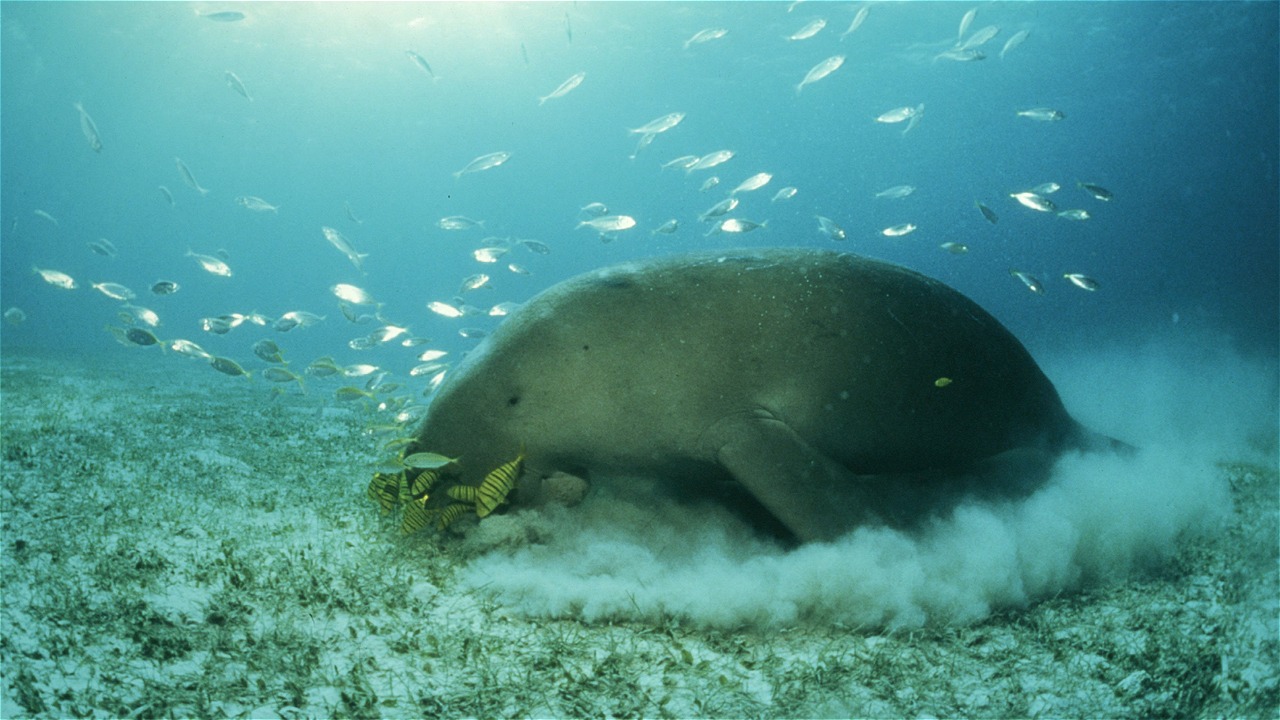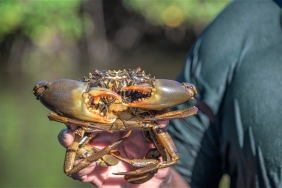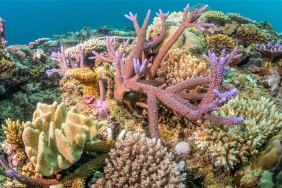THE PLIGHT OF THE DUGONG ON SANDUAY BEACH
By: Irwanto and Andini Kusumasari
Thursday afternoon (3/3/2016), Sanduay Beach in Wasior was suddenly crowded with people. A dugong (Dugong dugon) with a length of ± 2.7 m was found stranded on the beach and dead. According to some residents, as expressed by Yohanes Torey, this dugong was seen dead stranded on Sanduay beach on Tuesday (1/3/15) morning, but because it was still far from the reach of the community, the dugong was left. Yohanes added "it was only today (Thursday) that the dugong was lifted by local residents to the shore. "
Based on the observations of the WWF team in Wasior, there was a bruise on the left flipper of the dugong which was thought to have come from a collision with the reef. If analyzed using tidal data, at Sandubay Beach, the low tide occurred at around 05.00 WIT. It is possible that at that time the dugong was trapped by the receding tide and when trying to return to the sea, the dugong had difficulty because it collided with the coral, causing the left fin to break and bruise until the dugong finally died.
Responding to the stranded dugong incident, which had never happened before at Sandubay Beach, residents finally took the initiative to cut the dugong's body parts for consumption. Although Sandubay Beach is actually included in the Teluk Cendrawasih National Park (TNTC) area and dugongs are protected animals, when these dugongs die from being stranded and not die from being hunted, the community uses them for consumption.
When the WWF - Wasior team came to review, the condition of the dugong already smelled rotten, so it can be ascertained that there are many bacteria in the body of the Dugong and should not be consumed by the community. The WWF team also could not confirm the sex of the dugong because the dugong had been cut into pieces of meat to be distributed to the community.
This incident is quite alarming, especially since it coincides with the commemoration of World Wildlife Day, which is celebrated every March 3. Seeing this incident, the WWF team and the TNTC Hall plan to take action to educate and socialize the community around Sandubay Beach on how to handle stranded marine mammals. Because it is likely that Sandubay Beach is one of the dugong's feeding grounds. Dugong are often seen looking for food around Sandubay beach. In addition, there is also a need for education and socialization to the community about the dangers of consuming meat that has been rotten.
The survival of endangered species needs to be maintained. It is also necessary to pay attention to threats that can disrupt the habitat for unique species including dugongs in order to minimize activities that make them extinct. Of course, the involvement and collaboration of the government and fishermen associations needs to be better established through increased understanding of species protection and education to learn more about the context of the lives of important species in the TNTC area. The survival of species is our duty together, because we are part of nature and so are the species on earth. "The future of wildlife is in our hands."





